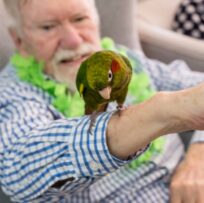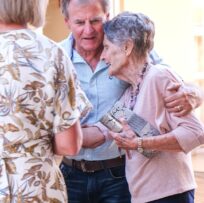Casual Friendships, Coworkers, and Even Your Outer Circle Influence Your Health
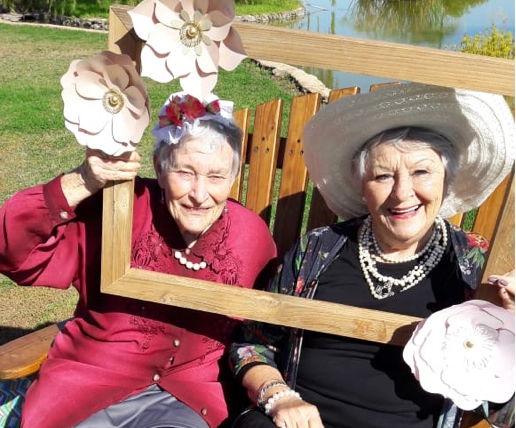
Middle Circle: Occasional Companions
As essential as our inner-circle relationships are, the middle circle, which may expand our friendships to 150 or so, is just as vital. In this social region, we may not necessarily know one another’s deepest secrets, but we enjoy having our lives intersect. Middle-circle friends provide a vital buffer against
As essential as our inner-circle relationships are, the middle circle, which may expand our friendships to 150 or so, is just as vital. In this social region, we may not necessarily know one another’s deepest secrets, but we enjoy having our lives intersect. Middle-circle friends provide a vital buffer against

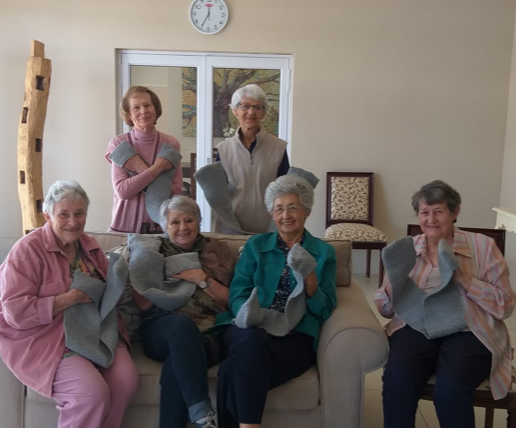
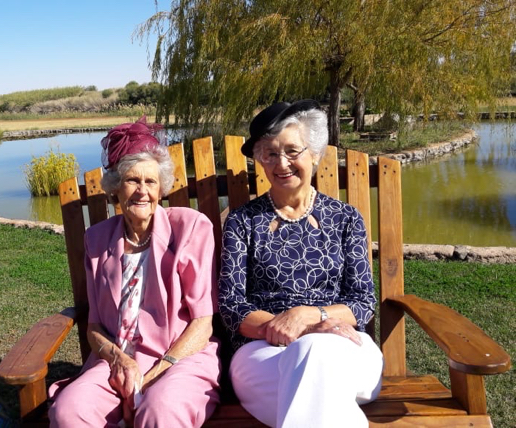
Relational loneliness.
When we were growing up, many of us may have taken our casual friendships for granted. Our classes, sports, camps, and clubs gave us plenty of opportunities to cultivate our middle circle. We saw most of our friends every day in school or around the neighbourhood. Such casual connections are harder to establish in adulthood, especially when we’ve left our hometowns and plunged into career and family demands. Not only is there less time for social activities, but competition and status can complicate the bonds of friendship. Differences in achievement and wealth can cause distrust and jealousy, which make it difficult to gauge the mutuality of new relationships. This is why celebrities and people in top levels of leadership often feel lonely, why many still rely as adults on the communities of their youth, and take pains to maintain their original and most trusted friendships, rather than risking new ones.
But most of us can form new middle-circle friendships just as we did when we were kids: by joining groups. Whatever our age, humans tend to meet one another by gathering, and we tend to gather around shared interests and activities like sports, the arts, or a neighbourhood potluck. Belonging to a group can help reduce stress, repair emotional damage, and promote meaning and purpose. This is why groups also form around common struggles and why so many forms of therapy today include support groups.
Belonging to a group can help reduce stress, repair emotional damage, and promote meaning and purpose. Much of this therapeutic effect stems from the ways we interact when we gather. We tell stories. We laugh. We sing and dance and play music. We move and walk and work together. We give and take, call and respond, and synchronize with one another. This behavior comes naturally in every culture on earth. As Robin Dunbar explains, it’s all part of a long line of biochemical substitutes for social grooming.
These substitutes became necessary as humans evolved to expand their social circles. Because grooming requires direct one-to-one physical contact, it was an inefficient way to connect large communities. So evolution came up with other feel-good strategies to create a sense of belonging among many people at once.
Laughter is one of the most contagious, universal, and instinctive connectors, Dunbar told me. Like touch, it’s a trigger for endorphin release, so when we share laughter, we feel happier, more familiar with those around us, and more at ease. The Dalai Lama employs his infectious laugh to connect with crowds and world leaders alike. Laughter reduces stress and feels good both because it induces a positive biochemical response and because it brings people together—we rarely laugh alone. In a comedy club, when one audience member laughs, others almost always follow. At a party, when someone laughs out loud, others instinctively smile and turn to find out what’s so funny.
In movie theaters, jokes on-screen often produce a wave of laughter that starts with one or two people, then builds as others latch on. Humour creates a powerful bond among people who all find the same thing funny. It’s a form of common ground. Laughter reduces stress and feels good both because it induces a positive biochemical response and because it brings people together—we rarely laugh alone.
So, too, is rhythmic, synchronized sound and movement. If we’re lonely, Dunbar says, one of the best ways we can develop a middle circle of friends is to join a singing group, be it a barbershop quartet, a church choral group, or a local blues or rock band. His research has found that singing produces far more satisfying social bonds than group activities such as creative writing and crafts. He calls the bonding power released by group singing the “icebreaker effect.” The cooperation and close attention that are exchanged through synchronized activity turbocharge the benefits of group activity. Dunbar points out that any form of physical exercise will produce an endorphin kick, but having a partner and working out in sync will dramatically escalate the reward. This is true of jogging, biking, dancing—virtually any form of exercise. When our movements are orchestrated to coordinate with those of others, that interaction increases the natural high. Dunbar told me about a study he conducted on college teams rowing crew, which found that rowing in synchrony increased the endorphin release by 100 percent as compared to rowing alone. The shared movement, the shared experience, and the shared endorphin high all enhanced the team’s performance at the same time that they bonded the team socially.
The endorphin effect is just one of many biochemical phenomena that explain why people all over the world have traditional folk songs and dances; why children recite the Pledge of Allegiance together in school; why most religions involve congregational singing or chanting as a regular part of services; and why millions around the globe engage in sports. These chemical responses reward us for bringing friends together, secure our sense of belonging, and make social activities good for us, both physically and emotionally. These chemical responses reward us for bringing friends together, secure our sense of belonging, and make social activities good for us, both physically and emotionally.
When we were growing up, many of us may have taken our casual friendships for granted. Our classes, sports, camps, and clubs gave us plenty of opportunities to cultivate our middle circle. We saw most of our friends every day in school or around the neighbourhood. Such casual connections are harder to establish in adulthood, especially when we’ve left our hometowns and plunged into career and family demands. Not only is there less time for social activities, but competition and status can complicate the bonds of friendship. Differences in achievement and wealth can cause distrust and jealousy, which make it difficult to gauge the mutuality of new relationships. This is why celebrities and people in top levels of leadership often feel lonely, why many still rely as adults on the communities of their youth, and take pains to maintain their original and most trusted friendships, rather than risking new ones.
But most of us can form new middle-circle friendships just as we did when we were kids: by joining groups. Whatever our age, humans tend to meet one another by gathering, and we tend to gather around shared interests and activities like sports, the arts, or a neighbourhood potluck. Belonging to a group can help reduce stress, repair emotional damage, and promote meaning and purpose. This is why groups also form around common struggles and why so many forms of therapy today include support groups.
Belonging to a group can help reduce stress, repair emotional damage, and promote meaning and purpose. Much of this therapeutic effect stems from the ways we interact when we gather. We tell stories. We laugh. We sing and dance and play music. We move and walk and work together. We give and take, call and respond, and synchronize with one another. This behavior comes naturally in every culture on earth. As Robin Dunbar explains, it’s all part of a long line of biochemical substitutes for social grooming.
These substitutes became necessary as humans evolved to expand their social circles. Because grooming requires direct one-to-one physical contact, it was an inefficient way to connect large communities. So evolution came up with other feel-good strategies to create a sense of belonging among many people at once.
Laughter is one of the most contagious, universal, and instinctive connectors, Dunbar told me. Like touch, it’s a trigger for endorphin release, so when we share laughter, we feel happier, more familiar with those around us, and more at ease. The Dalai Lama employs his infectious laugh to connect with crowds and world leaders alike. Laughter reduces stress and feels good both because it induces a positive biochemical response and because it brings people together—we rarely laugh alone. In a comedy club, when one audience member laughs, others almost always follow. At a party, when someone laughs out loud, others instinctively smile and turn to find out what’s so funny.
In movie theaters, jokes on-screen often produce a wave of laughter that starts with one or two people, then builds as others latch on. Humour creates a powerful bond among people who all find the same thing funny. It’s a form of common ground. Laughter reduces stress and feels good both because it induces a positive biochemical response and because it brings people together—we rarely laugh alone.
So, too, is rhythmic, synchronized sound and movement. If we’re lonely, Dunbar says, one of the best ways we can develop a middle circle of friends is to join a singing group, be it a barbershop quartet, a church choral group, or a local blues or rock band. His research has found that singing produces far more satisfying social bonds than group activities such as creative writing and crafts. He calls the bonding power released by group singing the “icebreaker effect.” The cooperation and close attention that are exchanged through synchronized activity turbocharge the benefits of group activity. Dunbar points out that any form of physical exercise will produce an endorphin kick, but having a partner and working out in sync will dramatically escalate the reward. This is true of jogging, biking, dancing—virtually any form of exercise. When our movements are orchestrated to coordinate with those of others, that interaction increases the natural high. Dunbar told me about a study he conducted on college teams rowing crew, which found that rowing in synchrony increased the endorphin release by 100 percent as compared to rowing alone. The shared movement, the shared experience, and the shared endorphin high all enhanced the team’s performance at the same time that they bonded the team socially.
The endorphin effect is just one of many biochemical phenomena that explain why people all over the world have traditional folk songs and dances; why children recite the Pledge of Allegiance together in school; why most religions involve congregational singing or chanting as a regular part of services; and why millions around the globe engage in sports. These chemical responses reward us for bringing friends together, secure our sense of belonging, and make social activities good for us, both physically and emotionally. These chemical responses reward us for bringing friends together, secure our sense of belonging, and make social activities good for us, both physically and emotionally.
Outer Circle: Colleagues and Acquaintances
Of course, there are plenty of people in our lives who connect to us more peripherally but still contribute to our sense of belonging. These outer-circle relationships are the amicable acquaintances we build through occasional interactions on the job, in our neighbourhoods, through civic and social organizations, places of worship, or online.
This circle, which can expand our social network up to five hundred people or more, comes to us through common experiences and helps us feel more secure in our communal identity. A sense of shared purpose and interests with this set of people helps stave off collective loneliness.
These distant relationships don’t have the degree of openness and vulnerability that characterize closer friendships, but just the flicker of recognition and a welcoming smile help us feel known in a subtle but meaningful way. Familiar people make us feel welcome. They help us feel rooted in place. Over time, they can evolve into friends.
By Vivek Murthy, M.D., Former U.S. Surgeon General and author of Together: The Healing Power of Human Connection in a Sometimes Lonely World
Of course, there are plenty of people in our lives who connect to us more peripherally but still contribute to our sense of belonging. These outer-circle relationships are the amicable acquaintances we build through occasional interactions on the job, in our neighbourhoods, through civic and social organizations, places of worship, or online.
This circle, which can expand our social network up to five hundred people or more, comes to us through common experiences and helps us feel more secure in our communal identity. A sense of shared purpose and interests with this set of people helps stave off collective loneliness.
These distant relationships don’t have the degree of openness and vulnerability that characterize closer friendships, but just the flicker of recognition and a welcoming smile help us feel known in a subtle but meaningful way. Familiar people make us feel welcome. They help us feel rooted in place. Over time, they can evolve into friends.
By Vivek Murthy, M.D., Former U.S. Surgeon General and author of Together: The Healing Power of Human Connection in a Sometimes Lonely World

